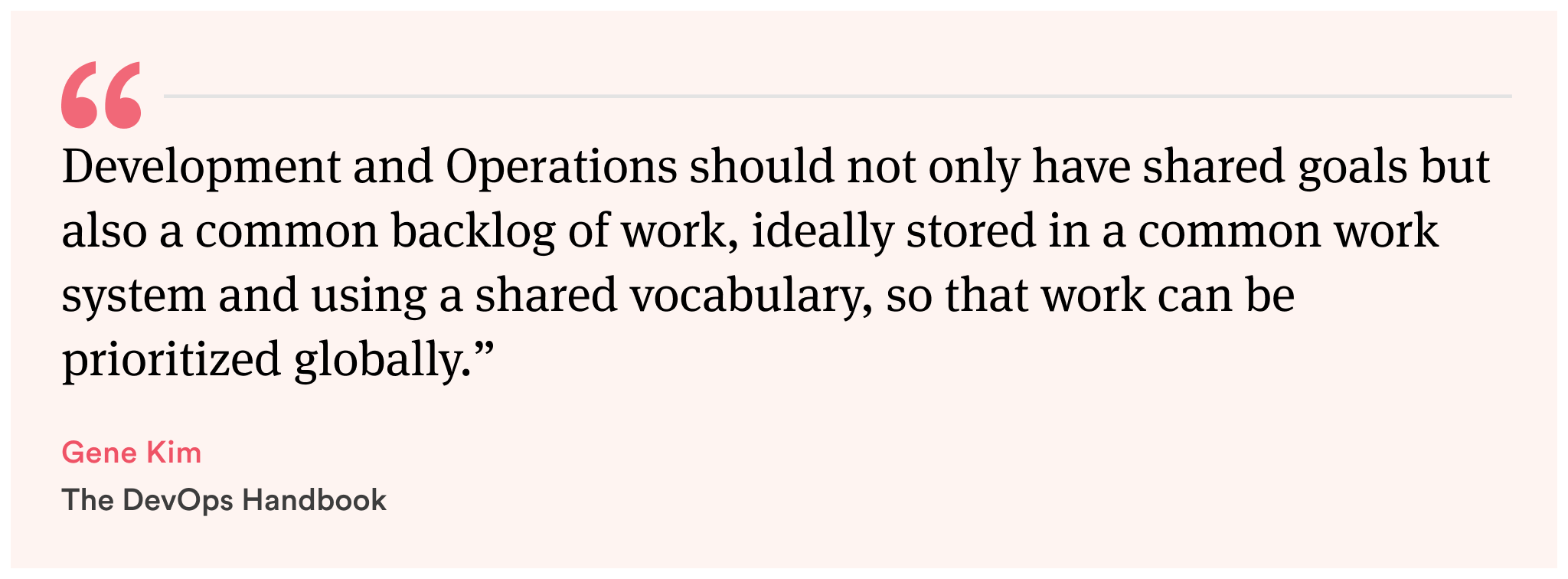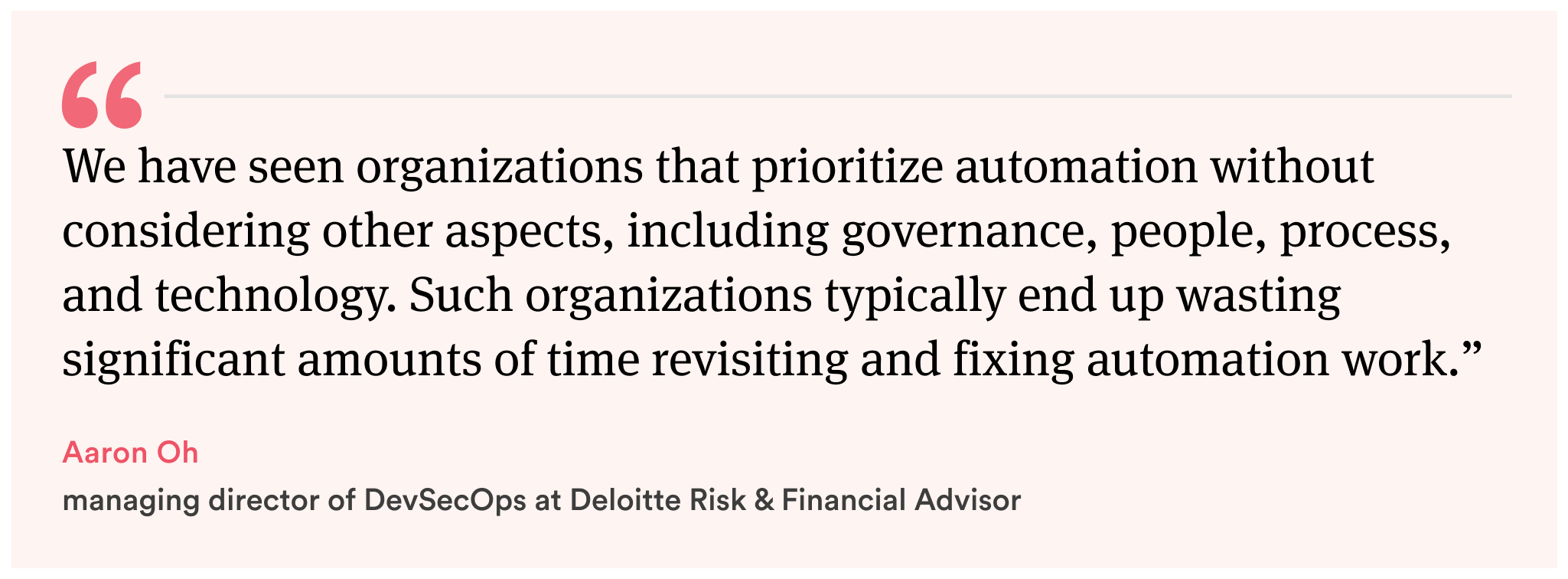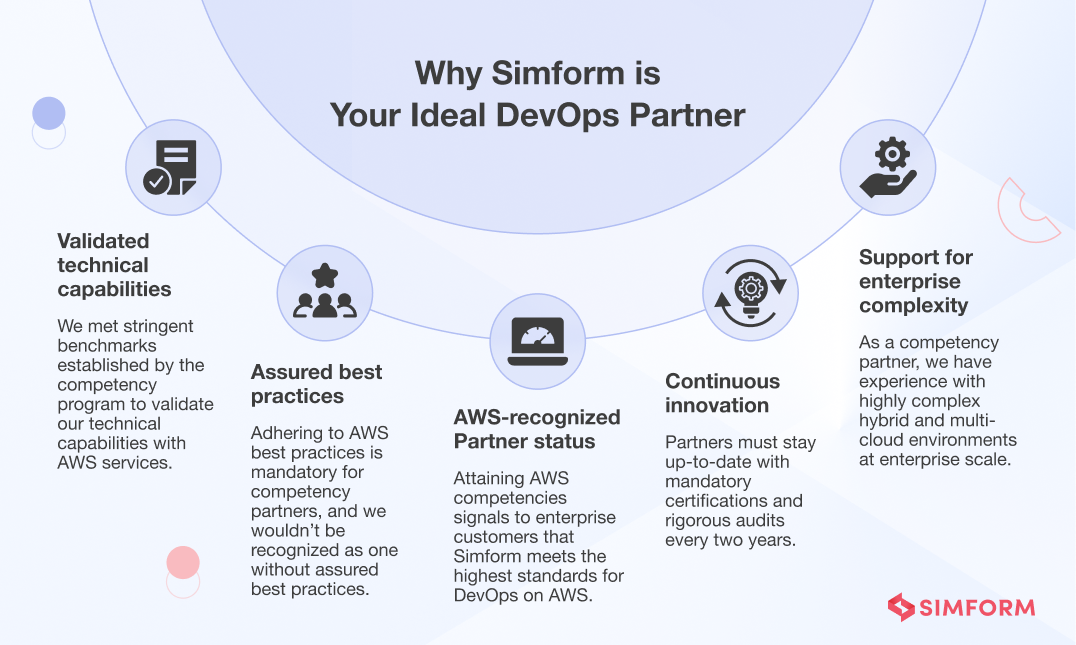Partnering with an incompetent DevOps agency can sabotage even the most promising DevOps adoption initiatives. Problematic signs usually don’t seem disastrous at first – a flaky build here, a delayed deployment there. But what begins as a few minor deployment failures snowballs into organization-wide bottlenecks, crippling your teams from innovating because they are too busy firefighting instead.
To avoid common DevOps mistakes, you must ensure your DevOps partner has validated technical expertise and a proven track record in DevOps solutions. Working with inexperienced, regular DevOps companies may lead to inefficiencies like:
- Developers still throw code “over the wall” for ops to deal with
- Mission-critical releases are still gated by sequential approvals
- Lots of manual work is required for builds, deployments, and infra changes
- There is little test automation or CI/CD in place
- Blameless postmortems are rare; finger-pointing between teams is common
- There is resistance to adopting infrastructure-as-code solutions
Because of these inefficiencies, release cycles remain slow, defeating the purpose of DevOps.
AWS created the DevOps Competency Program to formally validate consulting partners demonstrating proven methodologies, cloud architectural expertise, and customer success with AWS DevOps. In this blog, we’ll explain why and how competency partners like Simform fare better at guiding AWS cloud transformations than generic DevOps agencies. Let’s begin with why you shouldn’t rely on any regular DevOps company for improved outcomes.
8 reasons why you shouldn’t partner with a regular DevOps company
Done right, DevOps accelerates time-to-market, improves reliability, and reduces costs.
But these crucial optimizations remain out of reach if your DevOps partner doesn’t have extensive expertise across people, processes, and tools. A regular DevOps partner without AWS-validated expertise can stunt pipeline modernization. Here are eight reasons why:
1. Delayed release cycles for the lack of shared knowledge foundation

The objective of DevOps should be to foster a deeper understanding of both discipline’s roles and responsibilities for enhanced collaboration. But not every DevOps company emphasizes creating a shared foundation of DevOps knowledge within your internal teams.
Without consistent DevOps literacy and integrated workflows across infrastructure, code, and delivery pipelines, a number of issues may arise – configurational drifts, testing bottlenecks, conflicting tools, and more. This fragmented environment slows feedback loops, causes rework, and decreases release momentum. The challenges become 10x bigger when the complexities of the cloud and the vastness of AWS services are involved.
On the other hand, AWS DevOps partners like Simform build shared knowledge across developers and IT operations by providing extensive training on optimizing workflows, infrastructure, and automation for the AWS ecosystem.
We also help ingrain consistent DevOps principles and methodologies while implementing solutions tailored to your business needs. This continuous guidance fosters aligned, cloud-savvy teams equipped to communicate and collaborate effectively as they begin to use the latest AWS services and DevOps tools for innovations.
2. Wasted efforts in the absence of well-defined processes
DevOps initiatives often struggle when teams immediately focus on agile delivery without first defining structured processes. Though these teams value speed and autonomy, they neglect to create workflows for code to securely reach production.
An edtech client approached Simform with DevOps issues that emerged because of communication gaps
At the client’s organization, releasing applications was painfully slow and complicated. Developers uploaded updates to the GitHub repository without clear documentation on the changes. This lack of clarity meant that QA engineers had to sift through the code to determine which tests to create. Without linting rules, unstable code often reached the staging environment, causing issues for sysadmins responsible for releases.
This communication gap, along with the absence of standardized documentation and coding practices, resulted in duplicated work and crises during each release.
To address this, we helped the CTO create an end-to-end release checklist to ensure clarity on requirements. We also enforced commit hooks and pull request templates so changes are clearly documented. Lastly, we introduced templates and calendars to enable smooth handoffs between teams.
Mature AWS DevOps Competency Partners like Simform recognize that foundational capabilities require extra upfront planning despite slowing initial deployments. The upfront commitment to “doing it right” leads to more robust systems and reliable ongoing velocity.
3. Lack of resilience in applications because they ignore incremental approach
Too many companies assume that adopting DevOps means immediately transforming everything about the development and infrastructure practices overnight. This assumption often backfires.
How a marketing automation platform suffered service disruptions due to a haphazard DevOps approach
A marketing automation company decided to hastily containerize their entire backend system and shift it to a public cloud without much testing. The developers were still writing application code in large monolithic components that could not easily scale or isolate faults. The operations team immediately tried to implement a complex CI/CD pipeline with too many automated stages.
Within months of the haphazard DevOps implementation, the application suffered from repeated runtime crashes and service disruptions due to its brittle architecture which was hard to update and diagnose problems in. Outages were frequent even though infrastructure was theoretically scalable because underlying application flaws were never incrementally addressed. Developers and ops engineers had no shared visibility for quickly repairing issues.
How Simform would have approached it instead
In this case, we would take an incremental, iterative approach to enable DevOps best practices. First, we would shift the monolithic application architecture to independent microservices for better fault isolation and scalability. Next, we would focus on creating API contracts between services and implementing test automation to catch issues early.
Once this foundation was solid, we would implement a CI/CD pipeline for continuous delivery along with infrastructure-as-code for self-service automation. This step-by-step approach would ultimately create a more resilient, available application. Trying to transform huge legacy systems overnight without validating each incremental stage is a recipe for disaster in DevOps.
4. Cultural and process debts due to focusing on tools over people
Regular DevOps service providers often make the mistake of aggressively pushing new tools and advanced technologies onto clients without empathy for existing contexts within those organizations.
When onboarding a client, a thorough analysis is rarely conducted on current team dynamics, technical workflows, documentation practices, and cultural readiness. Engineers at client companies are then expected to adopt all these sophisticated new toolsets without enough training, support, or tailoring for their workflows. As a result, they struggle to properly leverage the flood of underutilized tools now at their disposal while pre-existing process flaws persist and even accelerate.
In contrast, a consultant with AWS DevOps Competency invests heavily in understanding a client’s unique culture and processes before any tooling recommendations. We collaborate with your engineers to outline incremental improvements that won’t disrupt workflows. With engineers’ workflows and productivity prioritized, new tools are gradually integrated only as needed with extensive support resources. This balanced approach allows technical capabilities to grow while avoiding the pitfalls of a shortsighted, tools-centric mindset.
5. Short-lived productivity gains without strategic automation

It’s tempting for inexperienced DevOps service providers to want to automate everything right away. Without proper planning, they take a haphazard approach to automation without clear goals or strategy. They may not take the time to properly assess current workflows and systems, resulting in simply digitizing broken or inefficient processes. Without proven experience in building resilient automation, hastily created scripts and playbooks often turn out to be brittle and maintenance-intensive.
An eCommerce company ensured sustainable automation with Simform’s services
Seeking improved software delivery, an eCommerce giant hired Simform to implement release pipeline automation. Rather than rushing changes, Simform worked closely with teams to identify friction points and engineered guarded workflows – workflows that have protective measures, checks, monitoring, and governance in place to promote stability during automated processes.
We implemented CI/CD integration with incremental test automation to balance speed with control. By later gradually integrating AWS services like CodeDeploy and CloudWatch monitoring, releases became more robust, and code flows accelerated without disruption.
6. Quality compromises due to unrealistic timelines
Infrastructure, culture, and objectives differ vastly across organizations. Without thoroughly analyzing the client’s unique starting point, quoting averages sets the project up for delays. Rushing through the discovery and analysis stages leads to overlooked gaps that lead to quality issues down the road.
AWS DevOps Competency partners like Simform follow a structured methodology for timeline estimation based on the following crucial factors:
- Circle of influence: We evaluate the decision-making authority and scope of influence sponsors have to drive the adoption of recommended solutions within their organizations. This assessment helps understand what broader alignment might be needed across functions like engineering, operations, security, etc.
- Technical and strategic debt: We quantify the extent of technical debt (like manual processes, poor test automation, complex monolithic architectures) and strategic debt (like failed past initiatives, redundant tools) before committing to timeframes.
- Transformation dimensions: We tailor estimates based on the breadth of solutions required – such as just enhanced CI/CD pipelines vs. a wider effort including DevSecOps processes, cloud migrations, etc.
- Funding: We continuously track allocated budgets and funding to ensure any shortfalls don’t drastically alter committed timeframes. Funding gaps often derail timelines.
In essence, we invest the appropriate time in fully assessing and scoping the client’s current state. This allows for building an accurate roadmap aligned with predefined success criteria.
7. No visibility into DevOps value delivery because of not measuring its impact
A leading corporate bank hired a novice DevOps agency for a 6-month project to improve customer experience with more efficient release cycles. The agency did build CI/CD pipelines and deployed modern infrastructure, but they failed to implement monitoring metrics for visibility into business impact. Things like customer ticket volume and production incidents were not tracked.
As a result, the bank’s executives had no clear idea of how (or if) the shiny new DevOps pipelines were actually impacting business performance. There were improvements in release frequency and lead times from commit to deploy, but was this translating into better customer experiences? No one could say.
Unlike this novice DevOps provider, AWS DevOps Competency Partners would have established an integrated cloud dashboard from the start, tracking key metrics based on the business goals of the DevOps initiative. For example, when we worked with a client to build a highly resilient parking management system with a very low MTTR, we were able to quantify the impact of our solutions with a 10x reduction in MTTR. Check out this case study to learn how we did it.
8. Falling prey to ‘agilefall’ development practices
When companies lack the full commitment and capabilities required to transition from waterfall to agile methodologies, they often end up with an ad-hoc hybrid approach known as ‘agilefall.’ Common downsides of agilefall include:
- Teams work in “sprints” but only release new features/updates every few months.
- Automated testing and deployment tools are not implemented, leading to manual bottlenecks.
- Teams try to specify all requirements upfront instead of embracing agile principles of responding to change.
In contrast, as an AWS DevOps Competency Partner, Simform has deeply ingrained agile and DevOps best practices. We:
- Release updates as often as multiple times per day through robust CI/CD pipelines. This accelerates feedback loops.
- Make extensive use of infra-as-code, test automation, and other tooling for reliable delivery.
- Embrace agile values from top-down and foster close collaboration between teams.
- Are validated by AWS technical experts as truly following DevOps principles.
In a nutshell, regular DevOps agencies may or may not be your ideal tech partner considering these common mistakes they may make. AWS understands that stumbling upon a few hurdles is natural for companies new to DevOps transformations. The good news is that AWS DevOps Competency Partners can help ensure smoother sailing.
How a DevOps Competency Partner like Simform helps overcome common pitfalls

If we analyze common DevOps implementation mistakes, they tend to stem from a lack of institutional knowledge and experience. Hiring an AWS DevOps Competency Partner like Simform directly addresses the experience gap that leads to these mistakes.
- Simform has executed numerous successful DevOps solutions across companies of all sizes and industries. The breadth of real-world experience enables us to skillfully assess and meet the unique needs of each client’s environment to avoid common pitfalls.
- Achieving AWS DevOps Competency means we have demonstrated repeatable, proven architectures and automation workflows refined over years of engagements.
- Simform’s AWS team maintains advanced AWS certifications and participates in special AWS training to stay current on optimal, innovative approaches as AWS services rapidly evolve. This ensures our solutions are the most innovative among our competitors.
As an AWS Premier Partner, we use the AWS DevOps Guidance alongside the Well-Architected Framework to conduct assessments pinpointing strengths and improvement opportunities regarding your DevOps practices. Our goal is to collaborate across your developer, operations, and executive teams to share assessment insights. We then help you prioritize high-impact areas to iteratively improve – enhancing the security, compliance, velocity, and agility of your cloud environment.
Reach out to our team for a free consultation to discuss your challenges and vision.